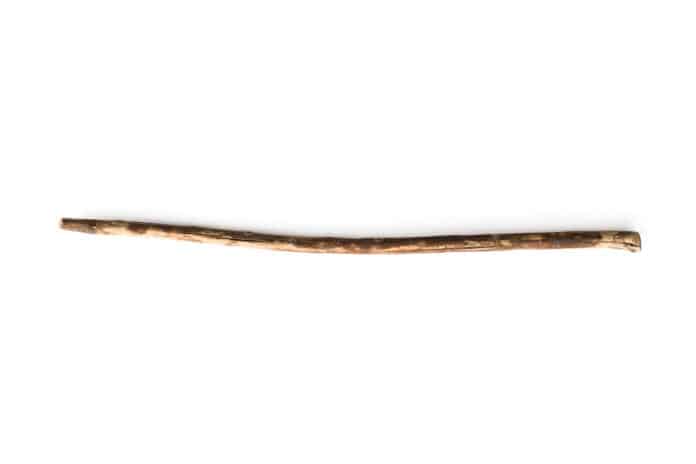A 300,000-year-old hunting weapon discovered in Schöningen, Germany, reveals that early humans were skilled woodworkers. The double-pointed wooden throwing stick, unearthed in 1994, was scraped, seasoned, and sanded before being used to kill animals. According to the new findings, early humans’ woodworking techniques were more complex.
The new study shows that developing lightweight weaponry may have facilitated group hunts of medium and small animals. The light weapons may have allowed for group hunts of medium and small animals, and throwing sticks as hunting aids may have involved the entire community, including youngsters.
The finding of wooden tools has transformed our understanding of early human behaviors, indicating a capacity to plan ahead of time, a solid awareness of wood characteristics, and complex carpentry abilities. The lightweight throwing sticks may have been easier to launch than more giant spears, implying that the entire society could have participated.
Co-author Dirk Leder from the University of Reading said: “The Schöningen humans used a spruce branch to make this aerodynamic and ergonomic tool. The woodworking involved multiple steps, including cutting and stripping off the bark, carving it into an aerodynamic shape, scraping away more of the surface, seasoning the wood to avoid cracking and warping, and sanding it for easier handling.”
The 77cm-long stick, discovered in 1994, is one of several tools recovered in Schöningen, including throwing spears, thrusting spears, and a second similarly sized throwing stick.
The double-pointed throwing stick, which was meticulously examined, was most likely employed by early humans to hunt medium-sized wildlife like red and roe deer and possibly fast-moving animals like hares and birds that were otherwise difficult to catch. The throwing sticks would have been hurled rotationally, like a boomerang, rather than overhead, like a modern-day javelin.
They could have allowed early people to throw up to 30 meters. Although such weapons are lightweight, the high velocity they can be thrown could have resulted in lethal high-energy collisions. The fine surface, well-shaped points, and polish from handling indicate that this was a piece of personal kit used frequently rather than a hastily produced instrument that was carelessly used.
Principal investigator Thomas Herberger said: “The systematic analysis of the wooden finds of the Schöningen site financed by the German Research Foundation provides valuable new insights, and further exciting information on these early wooden weapons can be expected soon.”
Journal Reference:
- Milks A, Lehmann J, Leder D, et al. A double-pointed wooden throwing stick from Schöningen, Germany: Results and new insights from a multi-analytical study. PLoS ONE DOI: 10.1371/journal.pone.0287719
